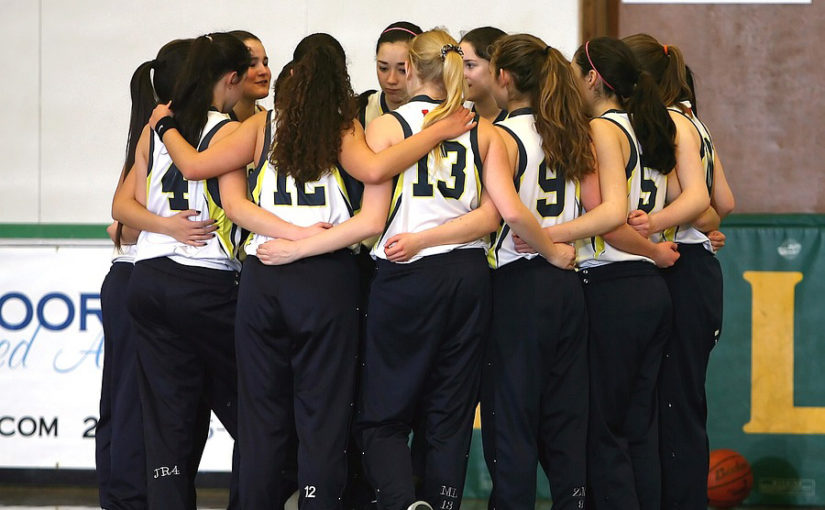Eight rules for a successful silent auction
Whether you’re looking for a free-standing fundraiser or one that complements another event, running a silent auction may be your answer.
While there is some work during the months prior to the auction to prepare, the actual event can be rather simple, easy, quick and profitable. What could be better?
 Preparation
Preparation
To run a silent auction, you put out items — athletic or otherwise — for your attendees to view. A bid sheet, which has a column for the name of the bidder and the amount of the bid, is attached or placed by each item. Also indicate if there is a minimum increase that the next bidder has to bid — $1 to 2 for inexpensive items, and perhaps $5 to 10 for more expensive ones. Make an announcement to all attendees and potential bidders that bids close at a pre-determined time. It’s also helpful if this notice is included on each bid sheet so that there is no confusion.
Bidders may have, for example, two hours prior to a banquet or meeting to view and write in their bids.
If you have a computer-literate individual in your athletic department or group, then you can post items on a website and accept bids over a period of days.
Organization
The process of organizing a silent auction has gotten easier over the years. There are vendors who supply athletic memorabilia for auctions. If one of the items they supply to you sells at the auction, you simply pay their fee, and you can usually return any unsold memorabilia that they supplied.
Obviously, you need to set a minimum bid on these vendor items and explain to the bidders that only items going over this level will be sold. It’s also possible for the second- or third-place bidder to purchase the item if you are satisfied with the margin of profit. The vendor simply gives you the additional copies after the payment is made.
Whether you use a vendor, or come up with memorabilia or items on your own, it’s your decision. Either way, the following suggestions should help in your efforts to host a successful silent auction.
1. Plan ahead.
As with any event or project, the more time that you allow yourself to handle the details and the better job that you do organizing it, the more successful it will be. It does take time to contact and solicit donated items for a silent auction. The individuals you ask may be busy and may not be able to immediately respond to your request, so give yourself enough time to pull everything together.
2. Have a specific reason for raising money when requesting auction items.
Potential donors are more likely to give if they know how, when, where and why the money is being raised.
Goals, such as funding scholarships, are much more likely to have success as opposed to, “We’re raising money for the athletic department.” While the face-to-face method for obtaining auction items is usually the most successful, it may be necessary to write letters or send emails to reach some donors. Always use letterhead stationary and make sure that your message is polite, clear, grammatically correct and without mistakes or typos. You are creating a first impression.
3. Don’t forget networking to pursue auction items.
Your next-door neighbor or a friend-of-a-friend may be the perfect contact for a well-known athlete, public figure or celebrity. This person may have access and be able to get a donation that you would never be able to obtain.
4. Try to get a note from the donor whenever possible, which serves as a “letter of authenticity.”
Autographs on athletic memorabilia are forged all of the time, and a serious collector may only purchase items with this guarantee of authenticity. When a donor normally mails a donated item, he or she often sends a brief note along the lines of, “I hope that this will help with your auction.” This works well for authenticity purposes.
If an individual hands you the item instead of mailing it to you, ask politely for a couple of minutes of that person’s time to write out a note indicating the signature is legitimate and how he or she originally obtained the autographed item. If the donor has an official letter of documentation, ask the donor about including it with the donated item.
5. Don’t give away items.
Knowing the potential value, set a minimum bid that will be accepted. Usually, athletic memorabilia includes autographed photos, balls and uniforms — all of these are easy to store and use the following year. They won’t spoil and don’t take a lot of space.
6. Consider services and items not athletic in nature.
Your intended goal is to raise money, so consider anything that is legal and in good taste. For example, someone can donate their services for one lawn mowing, car wash or an evening of babysitting.
7. Post large, more-expensive auction items on your website.
This provides the attendees with advance notice and the opportunity to make arrangements for potential purchase. This notice allows the bidder the time and opportunity to plan ahead to have sufficient cash ready for desired items.
8. Thank donors for all items in the days after the auction.
Say something simple such as, “Thank you very much for donating. Your generosity was greatly appreciated and your item went a long way in creating a very successful evening.”
This brief, simple note or email message not only expresses your gratitude, it also sets the right tone for possible future donations. When donors are appreciated, thanked and acknowledged, they usually are much more open and inclined to do it again in the future. Besides, it’s simply the right and classy thing to do.





